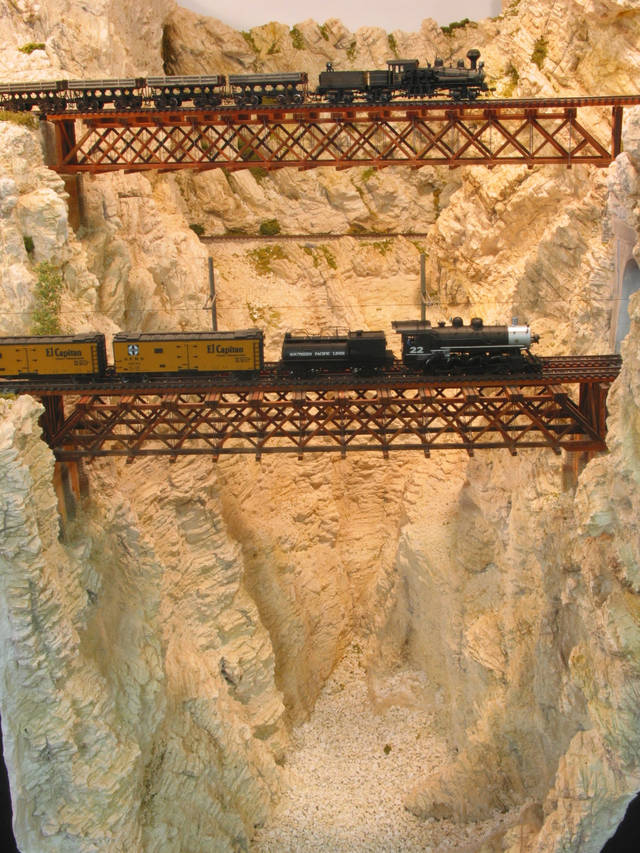I am a little shocked at the price of hydrocal in a half-gallon container and note that I can get hydrocal a lot cheaper in bulk. It is all made by USGypsum, I believe. But I don’t know how to translate the model railroad “lightweight hydrocal” into USG products. I think hydrocal white plater cement is the right stuff, but I don’t know for sure and I’ll have to drive a ways to get the material. Any clues?
There’s a store here that sells it in bulk and it’s listed as Hydrocal. they also sell Lightweight Hydrocal by name…
For most modeling work you can use plain old plaster of Paris. Hydrocal is only if you need very hard, strong plasterwork. If you are casting structures, hydrocal may be better (which is ironic since plaster of Paris was used to make architectural details) but for most scenery work regular old plaster will work just as well.
Dave H.
For the contrarian view: I like the strength of hydrocal for hardshell work. I have cracked plaster hardshell on my older layouts that used Plaster Of Paris.
Skip the Woodland Scenics and go for the big bag at construction stores carrying lath and plaster supplies. There is usually one place in most medium sized cities that carries this stuff (HD ain’t it). Another option that I like is plaster cloth (again skip WS and buy in bulk on Ebay) with a nice coat of hydrocal on top.
Here is an example of my work using hydrcal…You could stand on portions of this rockwork. It took a sledge to break it up when the layout came down.
Have fun,
Guy
Hydocal can also be found under the name “Ultracal 30” it comes in bulk.
Hydrocal comes in 100# bags. It is listed as a ‘gypsum cement’ and comes in several types, all of which are fine for scenery work. Hydrocal, Ultracal, Tuff Stone, Ultracal, and Fast Cast are USG products. The setting time is 20-40 minutes. These products dry with a very hard shell when used for scenery. The bad news is that they do not take stains very well.
Myself, I use medical plaster wrap over a mesh of cardboard strips to build my basic land forms. If I need more strength, I ‘paint’ the land form with Hydrocal. I later ‘paint’ the entire area with Plaster of Paris, and cast all of my rockwork with Plaster of Paris. As I mentioned, Hydrocal is very tough and does not take my rock stains very well.
Back in the late 60’s, I used Hydrocal soaked paper towels to build land forms and it was a very slow/messy process. The plaster wrap is much faster and for the most part, I have not had any ‘strength’ issues. I was ‘painting’ large areas with Hydrocal for additional strength, but the last 14 feet of scenery has no Hydrocal on it and I am satisfied with the overal strength of the ‘bluffs’ I have constructed.
BTW, I have been using ‘Sheetrock’ brand joint compound($6.71/18# at Menards) rather than Plaster of Paris. You can get it in various setting times(20 min - 225 min) and is sands/takes stains quite well. Normal pre-mix joint compound dries very hard and will not take stains. The long working time(I use the 90 min) allows me to carve and work-in my rock castings, and not have the material set-up all at once in my mixing bucket! I was looking for Structo-Lite, but none of the ‘big box’ stores seem to carry it. The ‘Sheetrock’ brand seems to be available in my area(Rochester, MN).
Jim Bernier
Does the setting time of Hydrocal (non WS) versus WS lightweight hydrocal differ? I find the working time too short for a lot of work I would like to do on my layout. Is there any way to slow the working time? Drying time I don’t care about, it can take as long as it wants.
Isn’t hydrocal the stuff dentists use to make mouth/jaw/teeth models?
Jack,
Typical setting time is about 20-40 minutes(depends on the ‘mix’ of water/material & if vinegar/salt was added to the mix). And yes, it has been used for one time casting molds. Ultracal has been even used for short run stamping!
‘Lightweight’ Hydrocal from Woodland Scenics may be one of the polymer filled versions of Hydrocal(or maybe W/S is mixing in something). I have used ‘tubs’ of the W/S product and have found no difference. As far as weight, I never measure that(I have no idea what my layout weighs).
Jim
Sort of. Ultracal 30 is not the same thing as Hyrdocal, but it works as well.
Adding a bit of vinegar to plaster o paris slows the drying time. Probably work for hydrocal too. (try a small batch first though) I add 2-3 table spoons of vinegar to a half gallon jug of water and use that to mix my plaster.
I gather this would be plain white vinegar (which is really clear).
Correct. Make sure you don’t use too much.
When I read your posting I immediately called my local - it being Saturday the prop answered the phone - and inquired about price; he repackages it into ten pound bags and is currently selling it for $10.50 cents. It has been a long time since I purchased any but I understand that a 100# bag of HYDROCAL WHITE® is currently going for about $50.00 so he is selling this at about a 100% markup but there is a significant difference between 10 lbs and 100 lbs.
HYDROCAL WHTE® is what you want. The first time I ever bought this stuff I split a 100 lb bag with three or four other modelers and it was going for about 27 cents a pound. I threw half of that away because it absorbed a lot of moisture and became unusable. My next investment was in a 25 lb pail; that was ten years ago and it cost me about ten bucks. I’ve still got about ten pounds of it left and it will probably have to be discarded also. My new/next layout is going to be far bigger than any I have ever tackled before and I will initially lay in a couple of 25 lb pail and I estimate that I’m going to have to fork out about fifteen bucks a pail.
If you purchase this stuff in the Woodland Scenics repackageing it is going to cost you an arm and a leg and you will have to take out a mortgage on your firstborne. Go to a building supply company which is where I got my last 25 lb pail and you will find it considerably cheaper. I’ve never seen it but I understand that it is marketed in seven pound pails and goes for about five bucks.
I use a product from Canada Gypsum (also available from USG) called Durabond. The name is followed by a number, such as Durabond-90, which represents the setting time, in minutes. I believe the fastest is Durabond-20. It comes in 1 lb. and 5 lb. boxes and in 33 lb. bags. While it is a patching plaster, it’s sometimes used as a joint compound, although seldom for the finish coat, as it dries very hard and is tough to sand. It will set in the designated time regardless of how thick or thin you mix it. I used it over screen for my basic landforms, then coloured it with interior latex house paint, mixed about 50/50 with water. Thinning makes it easier to apply, and it soaks right in.
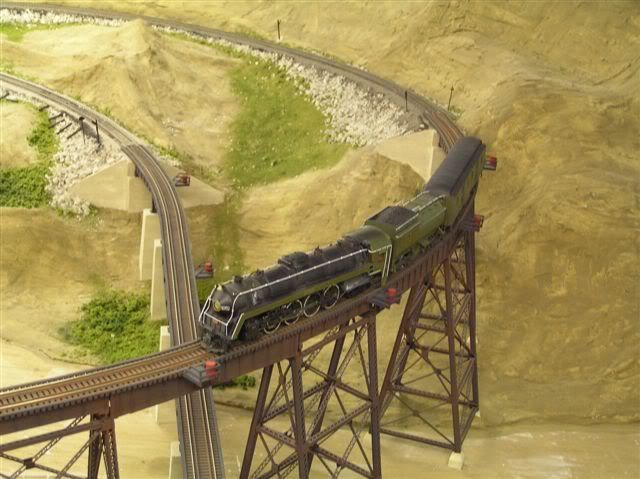
The stuff that hardens in the mixing container can be broken up with a hammer and used as rip/rap and sub-fill for the track and structures. I sprayed mine with a thin wash of black acrylic:

Durabond can also be used for casting bridge piers and abutments, using simple moulds made from sheet styrene (the info is a few posts down in the link). I stained mine with a wash made from PollyScale paints (still need to add rust stains).
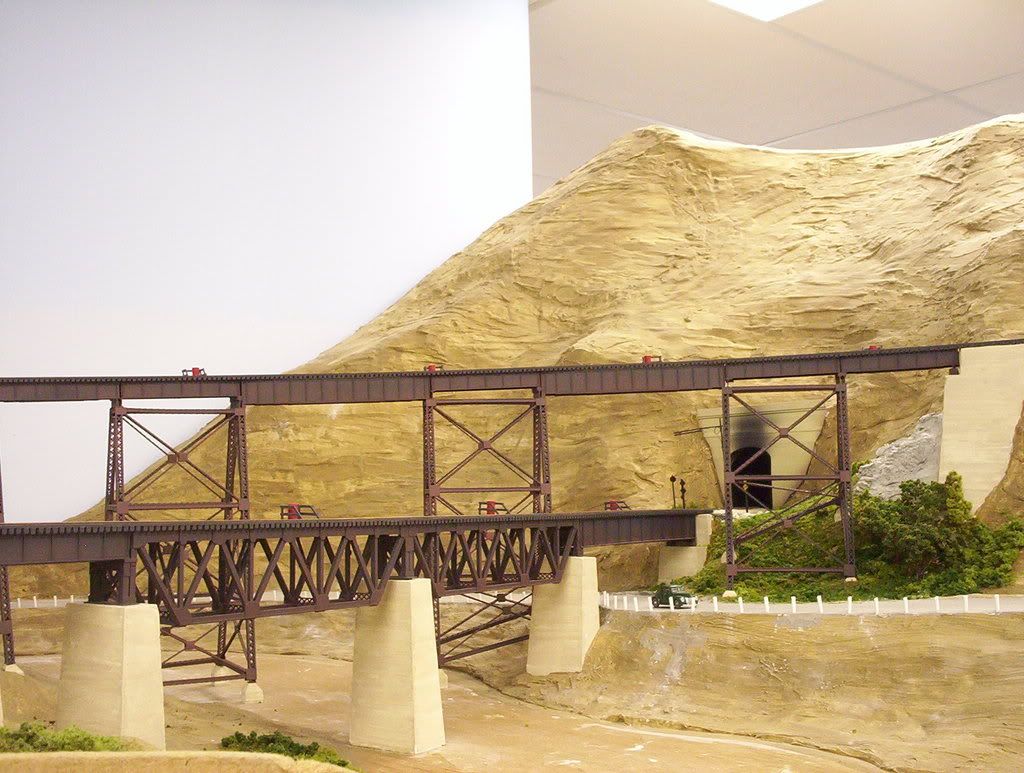
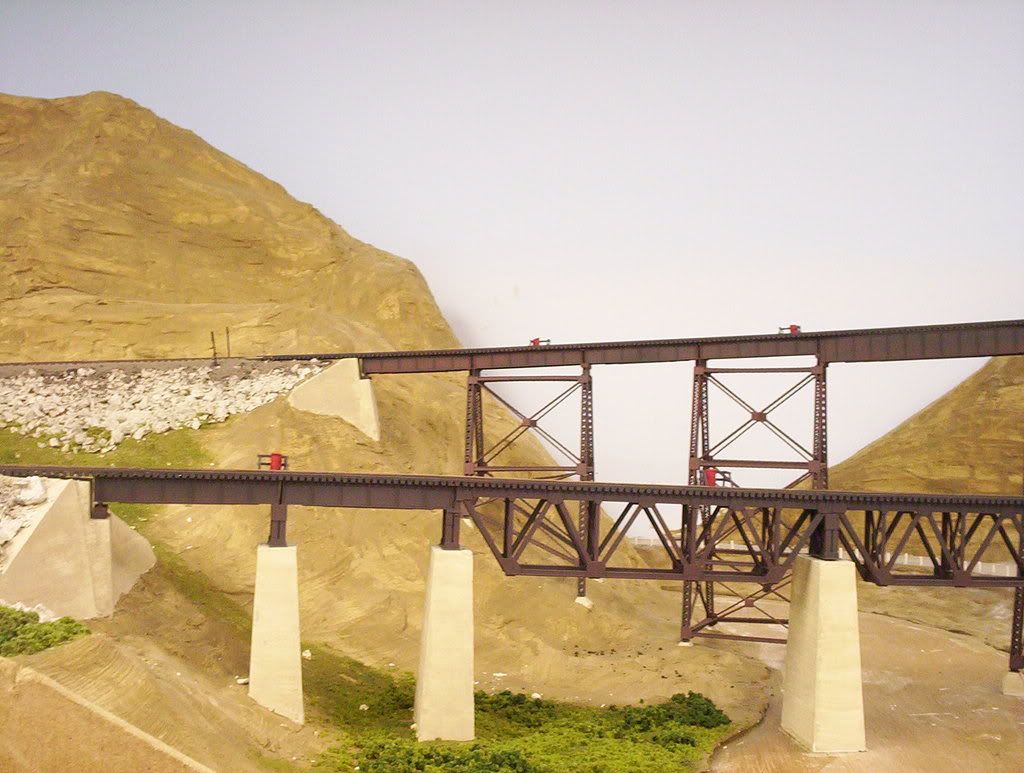
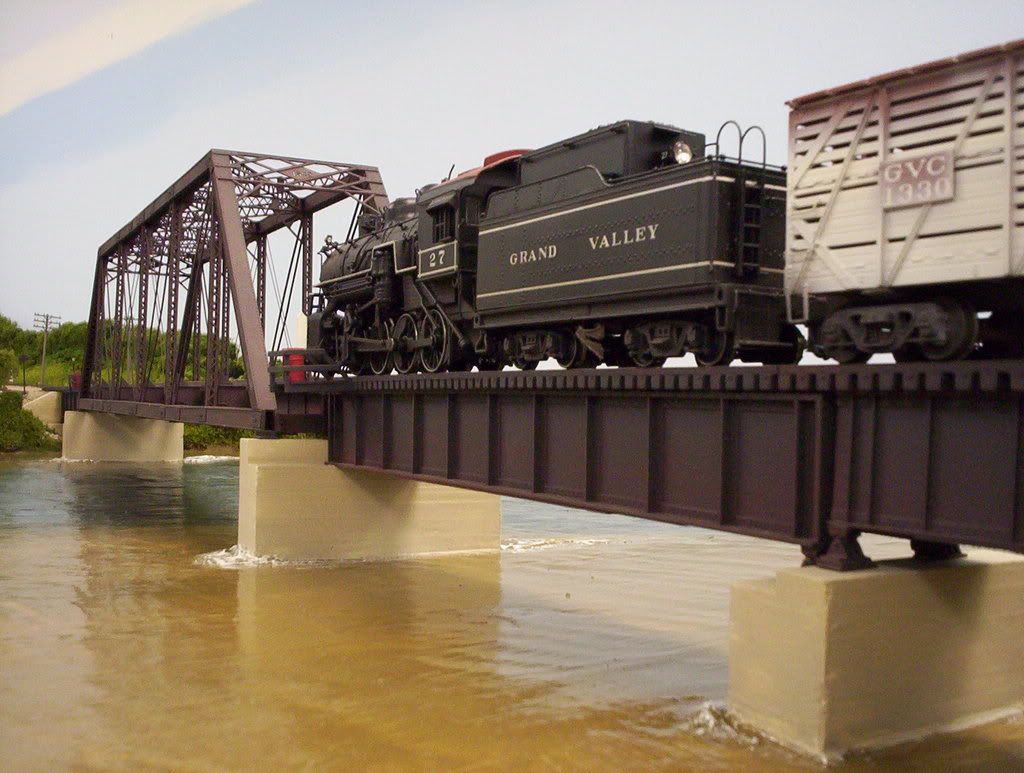
I also used the same Durabond to make the “water” in the rivers. It was painted with the same type of paint as used for the landforms, unthinned, then covered
This is an old thread but very good info.
